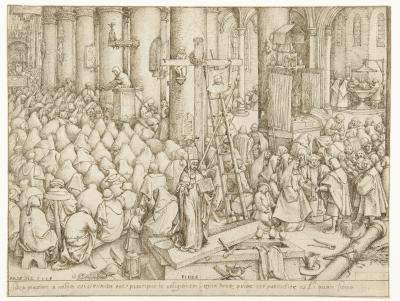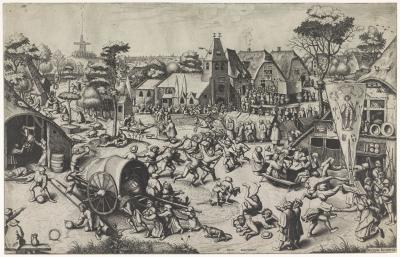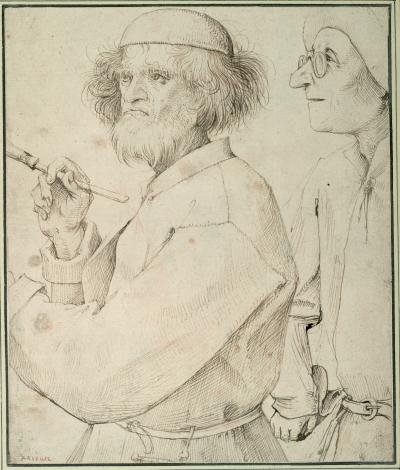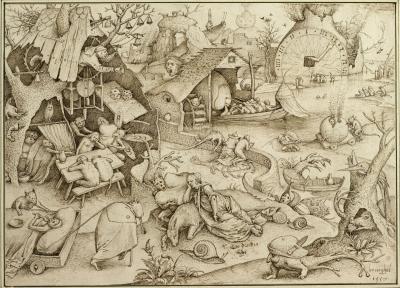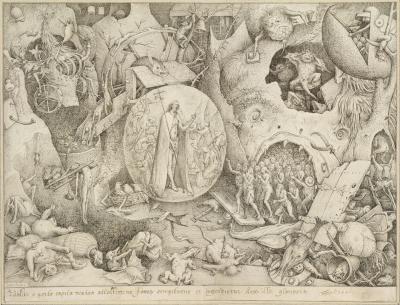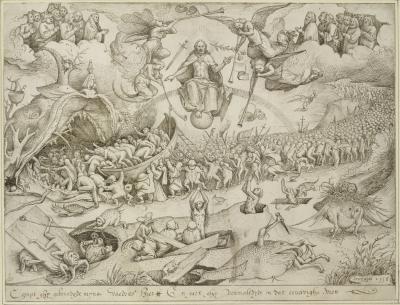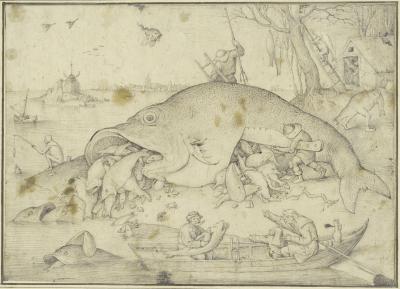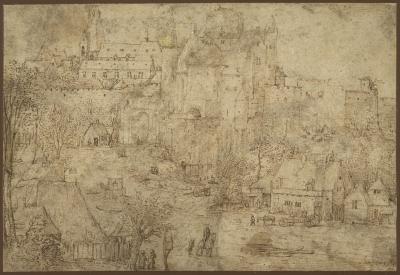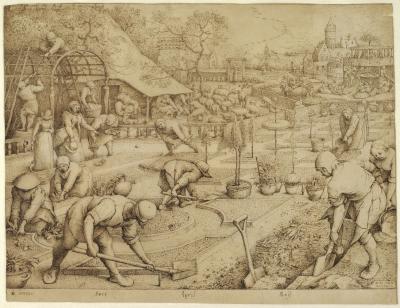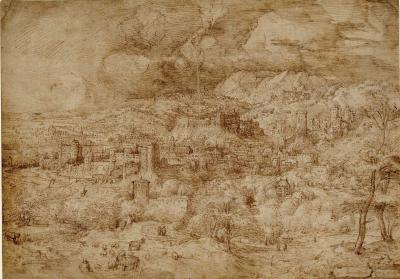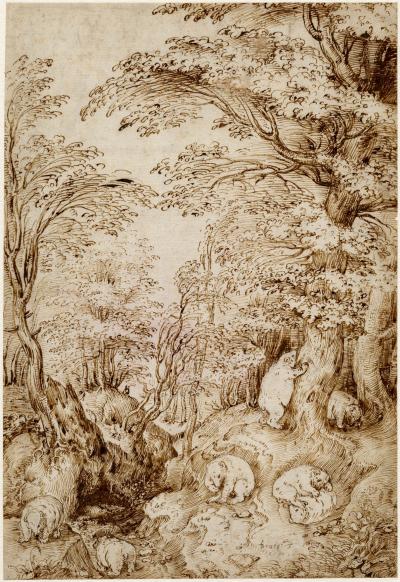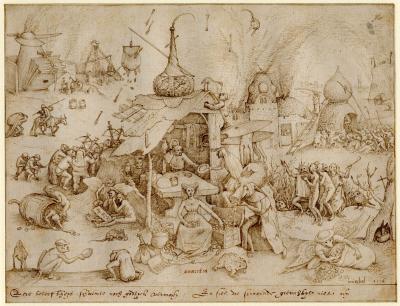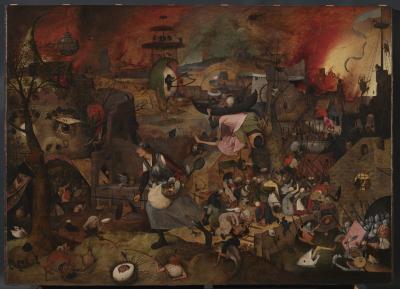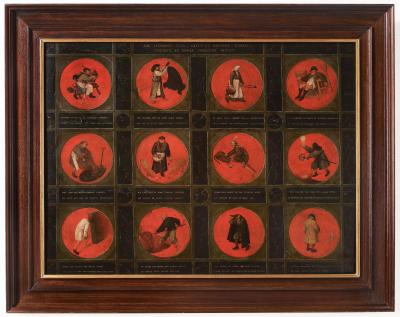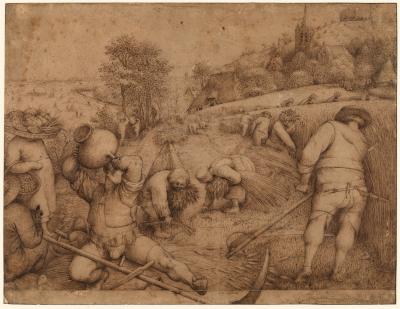In the late fifteen-fifties, Brueghel produced The Seven Deadly Sins, a series that was published in 1558 by Hieronymus Cock and engraved by Pieter van der Heyden. Its counterpart, The Seven Virtues, appeared somewhat later (1559/60). The drawing Desidia (Sloth) belongs to the cycle of the Deadly Sins and follows the scheme employed for all seven representations, in which the densely packed groups of accompanying figures with their attributes surround the main character. The manner in which perspective has been deliberately ignored here recalls medieval depictions. Brueghel very clearly references Hieronymus Bosch in his finely detailed drawing style, in the fantastic nature of his figures, and in the allusions to Dutch proverbs. The accompanying text from the printed version says that sloth makes man powerless, drying out the nerves until he is good for nothing. The main allegorical figure lies on the back of an ass, in itself a manifestation of sloth. The scene immediately behind it illustrates the proverb “Sloth is the devil’s pillow.” The head resting in the hand is a gesture associated with melancholy, a character trait closely linked to sloth. Countless details here reference the main theme of the drawing: the snails and the man in a bed equipped with wheels that is being pulled; the lazy pig that eats an easily reachable thistle; the monk who attempts to awaken the people sitting in front of the tavern from their lethargy by ringing a bell; the spectral clock with a skinny arm showing the time (the eleventh hour—the symbolic number of disorder—was drawn in reverse to take the mirror-image print into consideration) as well as numerous other characters and objects whose symbolism remains to some extent unclear. (Marian Bisanz-Prakken / Christof Metzger, 2013)
Desidia (Sloth)

Artist
Production date
1557
Collection
Object number
7872
Material
Pen en grijsbruine inkt, contouren doorgedrukt
Inscription
Signed at lower right: brueghel/1557; inscribed at lower centre in yellow-brown ink by a different hand: desidia; in the margin in yellow-brown ink by a different hand, subsequently cut and pasted on the back of the drawing: Traechheyt maeckt machteloos en verdroocht, die senuwen dat de mensch nieuwers toe en doocht [Sloth makes (man) powerless and dries out the nerves until man is good for nothing]
Dimensions
29.6 cm x 21.4 cm
Keywords
Other artworks of this artist
×

